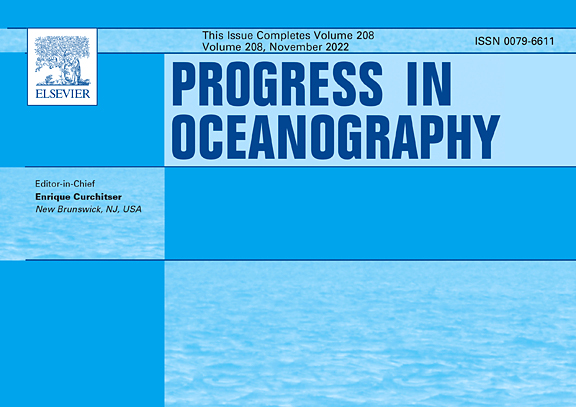
The State of OA Science in the Gulf of Mexico
The GCAN Science Working Group’s manuscript “Ocean Acidification in the Gulf of Mexico: Drivers, Impacts, and Unknowns” has been published online by Progress in Oceanography. GCAN would like to thank all the contributors and especially lead author Dr. Emily Osborne (AOML).
The report synthesizes current peer-reviewed literature on Gulf of Mexico (GOM) acidification across the ocean-estuarine continuum and identifies critical knowledge, research, and monitoring gaps that limit our current understanding of environmental, ecological, and socioeconomic impacts from acidification.
According to the report, the GOM remains a relatively understudied region with respect to ocean acidification, particularly regarding regionally important organism and ecosystem responses. Within the GOM, ocean acidification is also spatially variable and numerous physical and biogeochemical processes contribute collectively to carbonate chemistry dynamics.
Abstract:
Ocean acidification (OA) has resulted in global-scale changes in ocean chemistry, which can disturb marine organisms and ecosystems. Despite its extensively populated coastline, many marine-dependent communities, and valuable economies, the Gulf of Mexico (GOM) remains a relatively understudied region with respect to acidification. In general, the warm waters of the GOM are better buffered from acidification compared to higher latitude seas, yet long-term acidification has been documented in several GOM regions.
OA within the GOM is recognized as spatially variable, particularly within the coastal zone where numerous physical and biogeochemical processes contribute to carbonate chemistry dynamics. The historical progression of OA within the entire GOM is difficult to assess because only a few dedicated long-term monitoring sites have recently been established, and full-water column observations are limited. However, environmental drivers on smaller scales that affect GOM acidification were found to include freshwater, nutrient, and carbonate discharge from large rivers; ocean warming, circulation and residence times; and episodic extreme weather events. GOM marine ecosystems provide essential services, including coastline protection and carbon dioxide removal, and habitats for many marine species that are economically and ecologically important. However, organismal and ecosystem responses to OA are not well constrained for the GOM due to a lack of studies examining the specific effects of OA on regionally relevant species under contemporary and projected conditions. Tackling the vast number of remaining scientific unknowns in this region can be coordinated through regional capacity networks, such as the Gulf of Mexico Coastal Acidification Network (GCAN), working to achieve a system-wide understanding of Gulf OA and its impacts. Here we synthesize the current peer-reviewed literature on GOM acidification across the ocean-estuarine continuum and identify critical knowledge, research, and monitoring gaps that limit our current understanding of environmental, ecological, and socioeconomic impacts from acidification.
Citation:
Emily Osborne, Xinping Hu, Emily R. Hall, Kimberly Yates, Jennifer Vreeland-Dawson, Katie Shamberger, Leticia Barbero, J. Martin Hernandez-Ayon, Fabian A. Gomez, Tacey Hicks, Yuan-Yuan Xu, Melissa R. McCutcheon, Michael Acquafredda, Cecilia Chapa-Balcorta, Orion Norzagaray, Denis Pierrot, Alain Munoz-Caravaca, Kerri L. Dobson, Nancy Williams, Nancy Rabalais, Padmanava Dash. Ocean acidification in the Gulf of Mexico: Drivers, impacts, and unknowns. Progress in Oceanography. Vol. 209. 2022. 102882. ISSN 0079-6611. https://doi.org/10.1016/j.pocean.2022.102882.















